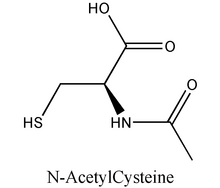Radiocontrast media can reduce renal excretory function by altering renal hemodynamics or by tubulotoxic effects. In high-risk patients, the incidence of acute renal failure induced by radiocontrast media is estimated to be 10 to 30 percent. It is the third leading cause of acute renal failure in hospitalized patients, accounting for around 10 percent of cases. Although several strategies have been used to reduce the incidence of contrast nephropathy, including diuretics, dopamine, calcium channel blockers, atrial natriuretic peptides, aminophylline, and endothelin antagonists, only hydration has been accepted as a preventive strategy. Birck and colleagues examined the evidence for prevention of contrast nephropathy using acetylcysteine.
The authors performed a meta-analysis using electronic databases, reference lists, and proceedings of major clinical meetings to identify relevant studies performed within the previous five years. Eligible studies were prospective, randomized controlled trials including patients with chronic renal insufficiency who were receiving intravenous contrast media. The development of acute renal failure was required to be a primary study outcome measure. Two researchers independently assessed the eligibility and quality of each study.
Thirteen references were identified, of which seven were trials that used a combined total of 805 patients. Six studies involved intra-arterial contrast used for cardiovascular studies, and one concerned intravenous contrast used during elective computed tomographic studies. All media were nonionic, and the mean amount of contrast given was 75 to 187 mL. Oral acetylcysteine was given in different formulations and regimens, with the most common being 600 mg twice daily on the day before and the day of the procedure. Overall, 403 patients were randomized to acetylcysteine plus intravenous hydration, and 402 were randomized to intravenous hydration alone. The mean age of patients was 69 years, and the proportion of men ranged from 57 to 90 percent, and patients with diabetes from 21 to 64 percent.
In four of the studies, acetylcysteine was associated with a significant reduction in the risk of contrast nephropathy.When data from all seven studies were combined, acetylcysteine plus hydration significantly reduced the relative risk of contrast nephropathy by 56 percent when compared with hydration alone. There was no overall relationship between the amount of contrast media administered or the degree of chronic renal insufficiency before the procedure.
The authors conclude that acetylcysteine is a safe and inexpensive prophylactic treatment for contrast nephropathy in high-risk patients. They call for studies to elucidate the optimal dosage regimens for this use.
Birck R, et al. Acetylcysteine for prevention of contrast nephropathy: meta-analysis. Lancet August 23, 2003; 362:598-603.
COPYRIGHT 2004 American Academy of Family Physicians
COPYRIGHT 2004 Gale Group



